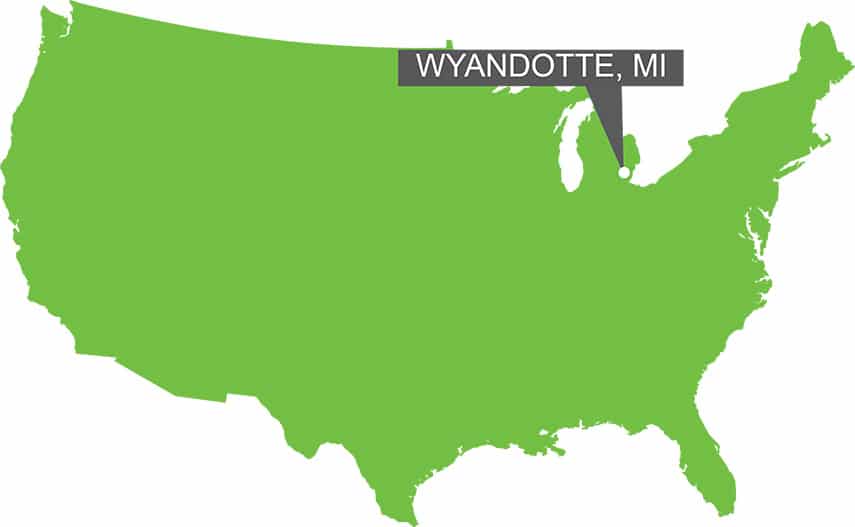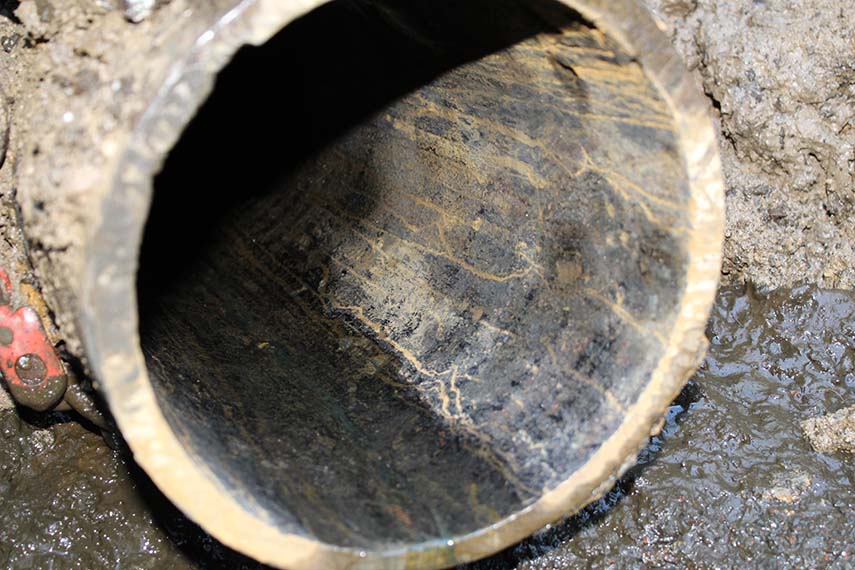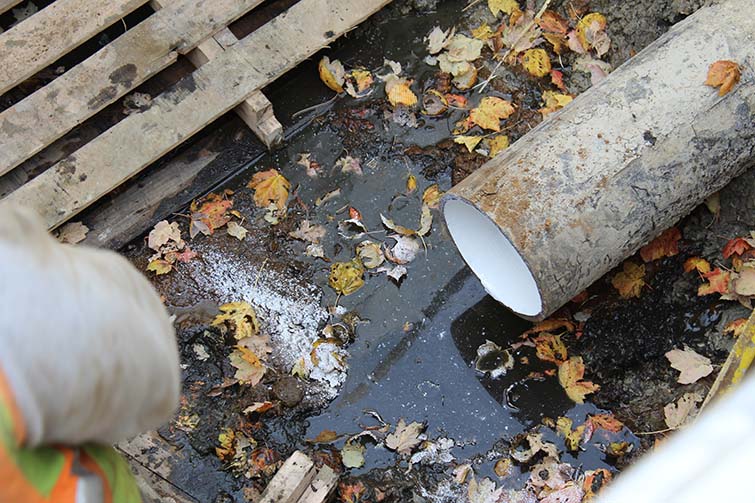Project Summary
Customer
City of Wyandotte, MI

Spray-in-Place Pipe Rehabilitation
Results
- Rehabilitation of 3,500 feet of main in one (1) month using SIPP rather than open cut/ direct replacement. It saved the city time and minimized the inconvenience for customers.
- With the previous open-cut method the city only managed to repair or replace half the length of main (1500-2000 feet) for the same cost.
The City of Wyandotte, MI, Municipal Water Plant serves over 12,000 customers and can produce up to 15 million gallons of water per day. Its distribution system covers five square miles and consists of 110 miles of water mains ranging from 4 inches to 30 inches in diameter. The utility sells over 1.5 billion gallons of water annually.
According to Bill Weirich, Superintendent of the Wyandotte Water Department, the traditional method of maintaining the water mains was open cutting and direct replacement. This entails trenching the entire length of pipe to be repaired or replaced and laying down new pipe in the trench. Disadvantages are the high cost, lengthy time involved in the process, and disruption and inconvenience that customers encounter. In addition, Wyandotte’s utilities are underground, complicating the open cut process.
After Weirich learned about a trenchless and turnkey process called spray- in-place pipe rehabilitation (SIPP) offered by USG Water Solutions (USG), Wyandotte decided to use this system for pipe maintenance in the older part of the township.
With aging cast iron pipes dating to the 1930s-50s, this area experienced numerous water main breaks and faced the potential for more. Using SIPP, Wyandotte intended to remediate the aging infrastructure and extend the life of the pipes by another 50-75 years.
USG’s SIPP rehabilitation process consists of:
- System analysis that includes mapping, utilizing CCTV to evaluate digitally recorded findings, and then diagnosing and identifying a restoration plan.
- Preparation of the pipe interior by drag scraping, power boring and/or hydro-jetting to create a clean, smooth dry surface. This is followed by a second CCTV inspection to determine if there are any leaks, infiltration, or repairs that are needed outside of the SIPP scope of work.
- Preparation for the application of the sprayed-on epoxy coating.
- Spray-on application of the epoxy lining using state- of-the-art robotic rigs that are computer-controlled for more refined application and curing.
- Final inspection and coating analysis.
“
Wyandotte rehabbed approximately 3,500 feet of main in only about one month. If we would have open cut that, we would probably been working on it all summer.
— Bill Weirich, Superintendent, Wyandotte Water Department

Once cured, the spray-applied epoxy coating creates an internal seal that prevents leaks and helps protect against future corrosion and biological buildup. This extends the pipes’ service life, helps reduce the frequency of maintenance, and increases the flow capacity for greater system efficiency. Because the epoxy coating bonds with the pipes, it also seals cracks and protects against formation of future infiltration. The coating elasticity means the newly applied lining is flexible and moves with the pipe, reducing the risk of leaks caused by infrastructure settling. Since the epoxy lining eliminates leaching of lead from soldered joints and the corrosion of copper and steel pipe, water quality is significantly improved.
“Wyandotte rehabbed approximately 3,500 feet of main in just one month using SIPP. If we had used open cut, it would likely have taken all summer. In addition, we were getting only about 1500-2000 feet for the same amount of money with the open cut method,” says Weirich. USG estimates that, on average, SIPP can yield a cost saving of around 20-30% compared to direct replacement.
Weirich also notes that SIPP minimizes inconvenience to consumers versus open cut and direct replacement as it generally requires only two very small access cuts. Because there is no need to dig up the whole length of the road, SIPP is also a good solution for repairing sections of pipe lying beneath railroads, interstates, highways, and buildings.
“I look at SIPP as being inobtrusive to customers because you are not creating a major construction zone. If you can run temporary lines without blocking off the ends of the streets, that helps as customers have access to their homes.,” he says. “I believe we were the first water department in Michigan to use SIPP. Going forward, we’re going to expand on where we started and begin expanding out to the whole system from those three points.”

“
We started small, so we could make sure that the process was going to work. Going forward, we’re going to expand on where we started and begin expanding out to the whole system from those three points.
— Bill Weirich, Superintendent, Wyandotte Water Department
